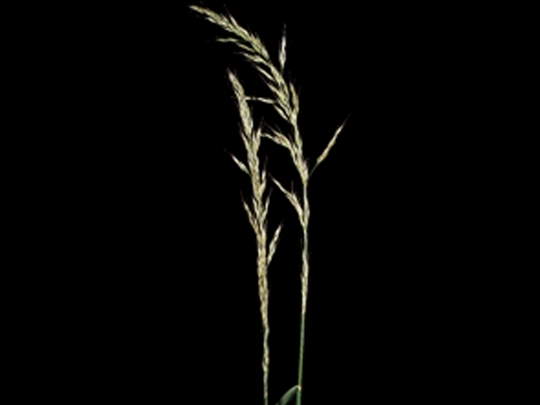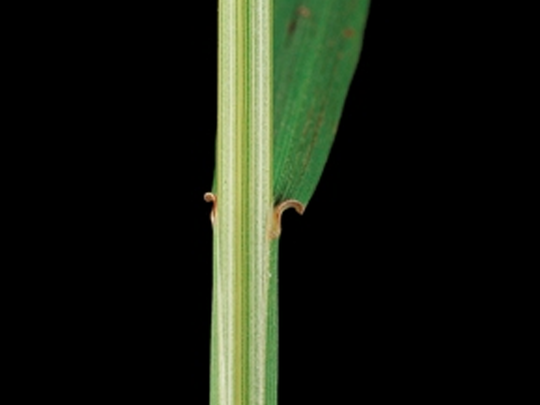Tall oatgrass is a perennial, tussock-forming top grass. It produces shoots very early in the spring. The strongly upright growth is typical. Moderate regrowth after grazing or cutting produces some fresh stem shoots. Tall oatgrass is not demanding and is widespread even on poor, dry soils. A good supply of nutrients favours growth. Widespread on roadsides. Does not fare well in harsh climates. Otherwise occurs in all moderate climatic zones in lowland and upland areas. Tall oatgrass is less tolerant of grazing and is found mainly in meadows cut once or twice a year. Thrives on extensively managed land. Feed value 7 only if used at the correct time. In ley systems tall oatgrass, often combined with cocksfoot, is a valuable partner in clover-grass mixtures for dry sites. It must be de-awned for mechanical sowing, although awnless varieties are available.
| Leaf | Leaf rolled in the bud, leaf sheath open and glabrous or lightly haired. Leaf blade 4–12 mm wide, lightly ribbed with pronounced keel. Upper side of leaf lightly haired or glabrous, underside of leaf glabrous and dull. Yellowish green lines are visible on the leaf when held up to the light. Ligule medium to long, white and heavily fringed. Auricles absent. |
| Culm | Culm generally upright, slightly geniculate at base. Very tall, up to 150 cm. Often produces sterile stems. Can produce new stem shoots after cutting. |
| Inflorescence | Paired racemes or panicle spread in all directions with varying number of side branches on the main axis. Tightly compact before flowering, these spread during flowering and remain unfurled. Spikelets approx. 10 mm long with flowers arranged in pairs. The lower flower is male, the lemma has a long awn. The upper flower is hermaphrodite and awnless. Glumes fringed with short hairs. |
| Fruit | The grain is still attached to the lemma and palea of the second male flower so 2 lemmas and 2 paleas are present in addition to the caryopsis. This double grain is 7–10 mm long and 2 mm wide. The lemma of the male flower has a long, bent and upward pointing “back” awn. Tufted hairs at the base. Caryopses fall from the grains during threshing. Bare seeds 4–5 mm long, 1.5 mm wide. TSW 3.5 g. |

